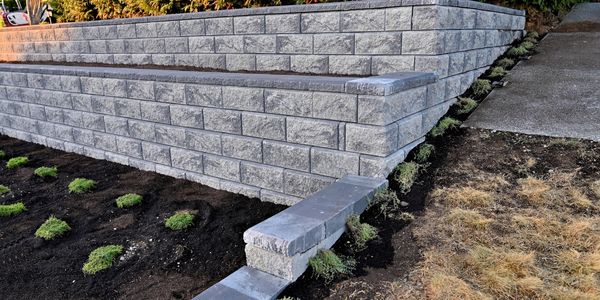Hardscape

Paver Patios
Paver patios are outdoor surfaces made from interlocking stones—such as concrete, brick, or natural stone—laid in customizable patterns. They’re known for their durability, design flexibility, and low maintenance. Unlike poured concrete, pavers resist cracking and are easy to repair by replacing individual stones. While installation can be labor-intensive, the result is a long-lasting, stylish patio that enhances curb appeal and withstands seasonal changes.

Walkways
Walkway design blends functionality, safety, and aesthetics to create paths that guide movement and enhance outdoor spaces. A well-designed walkway considers traffic flow, material durability, drainage, and accessibility. Materials like concrete, pavers, gravel, or natural stone are chosen based on style, climate, and maintenance needs. Curved layouts add visual interest, while proper lighting and slip-resistant surfaces ensure safety. Whether formal or informal, walkways should harmonize with the surrounding landscape and architecture for a cohesive, inviting experience.

Retaining Walls
Retaining walls are structures built to hold back soil and prevent erosion on sloped terrain. Commonly used in landscaping and construction, they create level areas, manage water runoff, and support changes in elevation. Types include gravity walls, cantilever walls, anchored walls, and gabion walls, each suited to different site conditions and load requirements. Materials range from concrete and stone to timber and modular blocks, offering both structural support and aesthetic appeal.

Pergolas
Pergolas are open-air outdoor structures made of vertical posts supporting a roof of crossbeams or slats. They provide partial shade, define outdoor living spaces, and add architectural interest to patios, gardens, or walkways. Often made from wood, vinyl, aluminum, or steel, pergolas can be freestanding or attached to a building. They’re ideal for supporting climbing plants, hanging lights, or creating a cozy retreat, blending functionality with style in landscape design.

Driveway
Driveways are private access paths that connect a street to a home, garage, or parking area. They come in various materials—such as concrete, asphalt, gravel, pavers, or brick—each offering different levels of durability, cost, and curb appeal. A well-designed driveway balances functionality, drainage, and aesthetics, and can be customized in layout (straight, curved, circular) to suit the property. Proper construction and maintenance ensure long-term performance and enhance the overall look of the landscape.

Landscape
Landscape refers to the visible features of an area of land, including its natural elements (like hills, rivers, and vegetation) and human-made features (such as buildings, roads, and gardens). Landscapes can be natural, shaped by geological and ecological forces, or cultural, reflecting human influence through design and development. Thoughtful landscape design balances function, beauty, and environmental harmony, enhancing both urban and rural spaces.